Look Out for December’s Extreme Full Moon
The Full Moon on December 15, 2024, will rise and set at its most extreme northerly points on the horizon—the result of a once-every-18.6 years “major lunar standstill.”
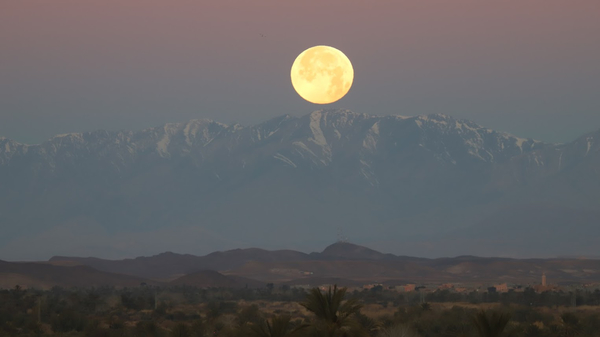
The points on the horizon where the Moon rises and sets vary from one day to the next. The Full Moon on December 15, 2024, will take things to the ultimate extreme.
©Steffen Thorsen/timeanddate.com
An Extreme Moonrise and Moonset
The Sun and the Moon rise in the east and set in the west. But that’s not the whole story. On most days, the Sun and the Moon do not rise precisely in the east, nor do they set precisely in the west.
In the case of the Sun, the positions of sunrise and sunset shift slowly over the course of the year, following a pattern related to the solstices and equinoxes.
For the Moon, the positions of moonrise and moonset shift more quickly: over the course of a month rather than a year. There is also a subtle 18.6-year pattern that produces extreme rise and set positions during a roughly two-year period known as a “major lunar standstill.”
The Sun: Tiny Shifts Each Day
This story takes a bit of explaining, and the best place to start is with the Sun.
First of all, why doesn’t the Sun rise and set in the same place each day? It’s because the Earth’s rotational axis is tilted. This means that for six months of the year the North Pole is tilted toward the Sun, while for the other six months, it’s the South Pole’s turn.
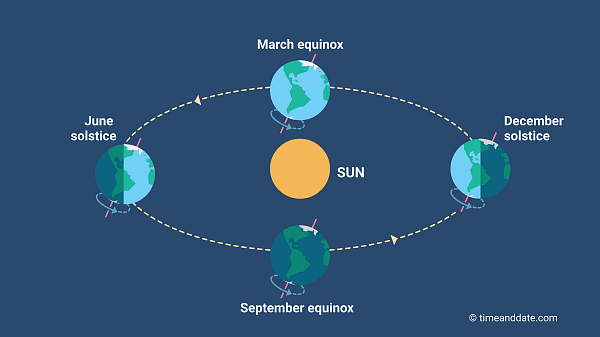
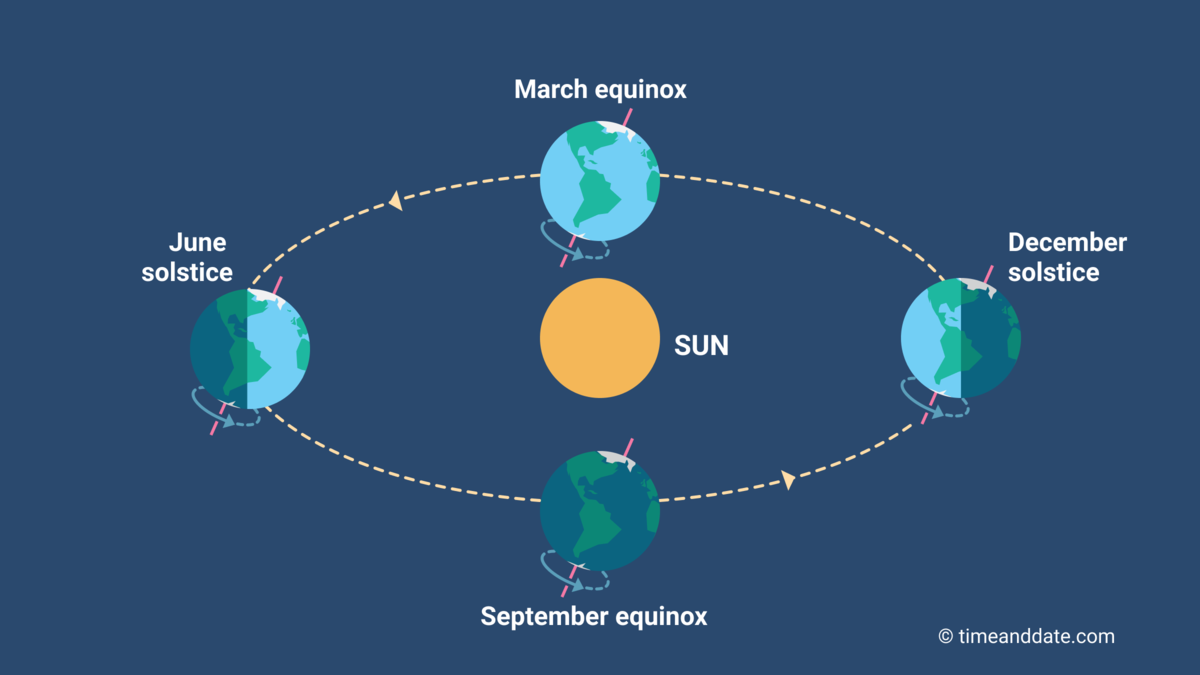
The Earth’s tilt affects both the time and the direction of sunrise and sunset. This is why the amount of daylight varies throughout the year, and why the Sun rises and sets at different points on the horizon.
©timeanddate.com
Overall, the Sun’s pattern is fairly straightforward. For one half of the year, the positions of sunrise and sunset move a tiny bit northward each day; for the other half of the year, the positions of sunrise and sunset move a tiny bit southward each day.
- At the March equinox and the September equinox, wherever you are in the world, the Sun rises precisely in the east (90°), and sets precisely in the west (270°).
- At the June solstice, the Sun rises at its most northerly point on the eastern horizon, and sets at its most northerly point on the western horizon.
- At the December solstice, the Sun rises at its most southerly point on the eastern horizon, and sets at its most southerly point on the western horizon.
Sunrise Direction Depends On Your Location
How far north is the most northerly point on the horizon where the Sun rises? It depends on your distance from the equator.
In Honolulu, in the tropics, the most northerly sunrise direction is 64°; further to the north in New York, it’s 58°. Meanwhile in Fairbanks—close to the Arctic Circle in Alaska—it’s 15°.
The figures are similar in the Southern Hemipshere. Wellington, New Zealand, is almost the same distance from the equator as New York; the most northerly sunrise in Wellington is 59°.
The Moon: A More Complicated Pattern
What about the Moon? The positions of moonrise and moonset follow the same general pattern as the Sun—but the changes happen more quickly. It is often said that the Moon does in a month what the Sun does in a year.
At New Moon, the Moon passes between Earth and the Sun. This means that, as seen from Earth, the Moon lies close to the Sun in the sky.
At Full Moon, the Moon is on the other side of Earth to the Sun—meaning that, from Earth, the Moon lies in the opposite direction to the Sun.
The result of all this is that the positions of moonrise and moonset depend on both the time of year and the Moon phase.
- At New Moon, moonrise happens around the same time as sunrise, at a similar point on the horizon. The same goes for moonset and sunset.
- At Full Moon, moonrise happens around the same time as sunset (not sunrise), at roughly the opposite point on the horizon. For example, if the Sun rises in the northeast and sets in the northwest, the Full Moon rises in the southeast and sets in the southwest.
A Bigger Range of Moonrise Directions
There is an additional factor that affects the positions of moonrise and moonset: the Moon’s orbit around Earth is slightly tilted.
The consequence of this is that the range of directions in which the Moon can rise and set is greater than the range of directions for sunrise and sunset.
In other words, the most northerly moonrise direction is further to the north than the most northerly sunrise direction. A similar increase applies to the most southerly moonrise direction, too.
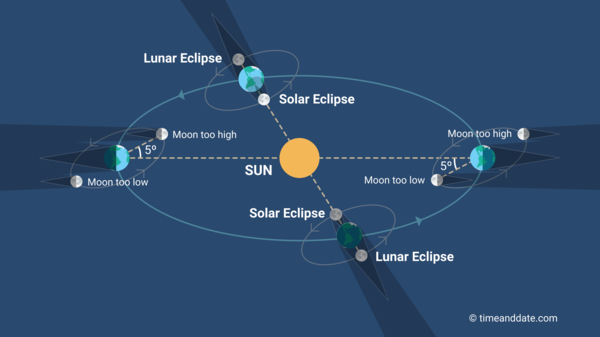
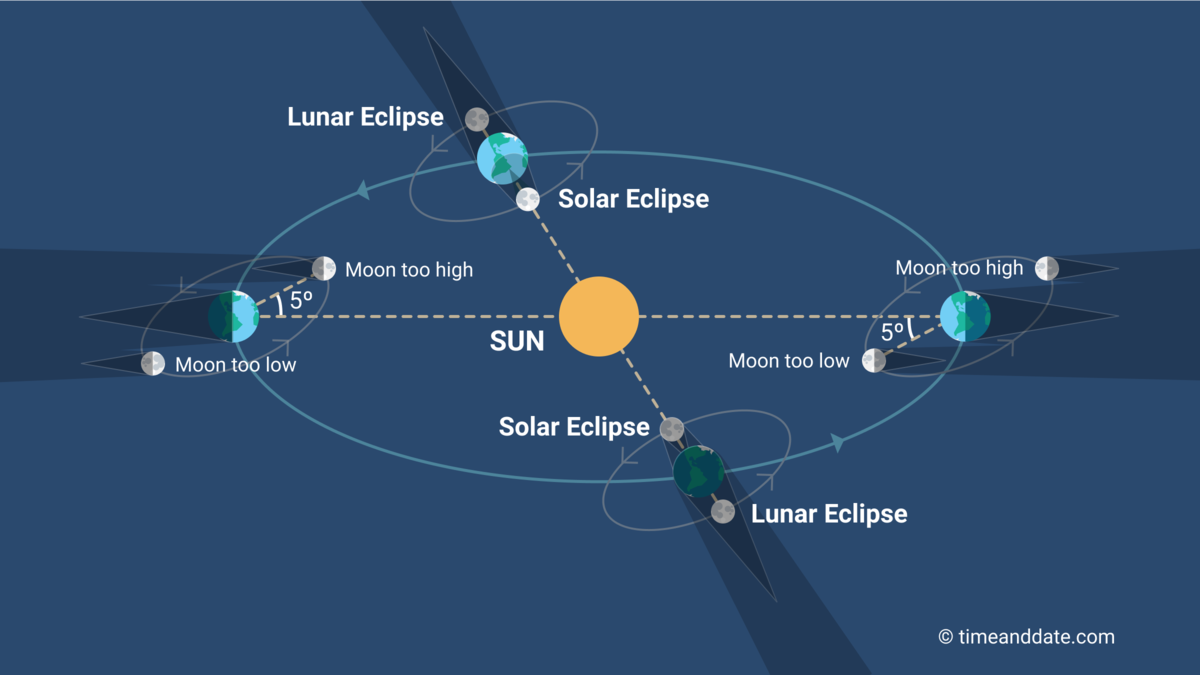
The Moon’s orbit around Earth is tilted by about five degrees compared to Earth’s orbit around the Sun. This is why we don’t have solar and lunar eclipses every month: the Moon is normally a bit “too high” or “too low” to produce a perfect alignment with the Sun.
©timeanddate.com
An Even Bigger Range of Moonrise Directions
And that’s not all. The final point we need to consider is that the Moon’s tilted orbit slowly gyrates, in a similar way to a gently wobbling gyroscope or spinning top. This is called “lunar precession”: it’s a slow, subtle cycle that lasts 18.6 years.
The effect of this is that every 18.6 years—for a period of around two years—the most extreme moonrise and moonset directions are slightly more extreme than usual.
Astronomers refer to this as a “major lunar standstill.” We are currently in the middle of one of these standstill periods.
See the Extremes at Full Moon
What does this mean in practice? A good time to observe a major lunar standstill is when the most extreme positions of moonrise and moonset during a month coincide with a Full Moon.
In December 2024, wherever you are in the world, the Full Moon will rise and set at its northernmost points on the horizon during this current 18.6-year cycle.
You can check the times and directions of moonrise and moonset using our tools. Make sure you have a clear view to the horizon—and keep your fingers crossed for the weather.
Example: Full Moon Rising over New York
Let’s take moonrise in New York as an example. The table below shows the direction in which the Full Moon rises over the course of 2024. The direction of sunrise in New York has been included for comparison.
Directions of Moonrise and Sunrise in New York, 2024
| Date (Full Moon) | Moonrise Direction | Sunrise Direction |
|---|---|---|
| January 25 | 59° | 115° |
| February 24 | 76° | 102° |
| March 25 | 97° | 87° |
| April 23 | 109° | 72° |
| May 23 | 125° | 61° |
| June 21 | 129° | 58° |
| July 21 | 121° | 62° |
| August 19 | 109° | 73° |
| September 17 | 95° | 87° |
| October 17 | 71° | 102° |
| November 15 | 60° | 114° |
| December 15 | 51° | 121° |
The table above shows that the Full Moon does indeed do the opposite to the Sun, and in a more extreme way.
In New York, the Full Moon rose in its most extreme southerly direction (129°) in June 2024. At this time of year, the direction of sunrise was at its most northerly (58°).
Meanwhile, the Full Moon rises in its most extreme northerly direction (51°) in December 2024. Likewise, around this time of year in New York, the direction of sunrise is at its most southerly (121°).
For simplicity, we’ve only shown moonrise and sunrise directions in the table above. Remember, too, that the direction of moonset is at its northerly extreme at Full Moon in December 2024.
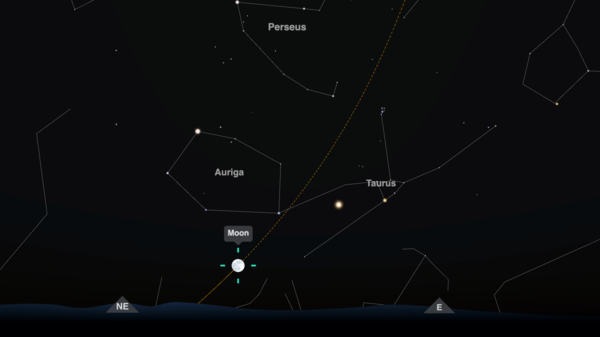
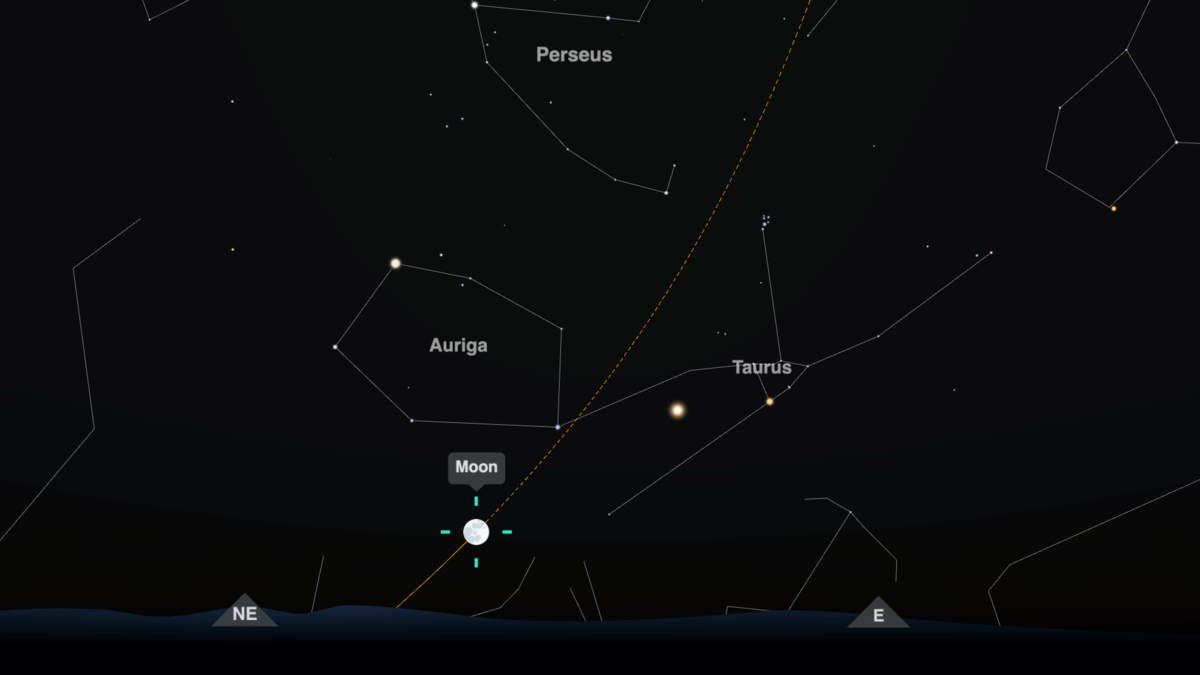
December 15, 2024: this screenshot from our Night Sky Map for New York shows the Full Moon rising in the northeast (click to zoom). Notice how the Full Moon climbs high into the sky—the opposite of what the Sun does in the Northern Hemisphere at this time of year.
©timeanddate.com
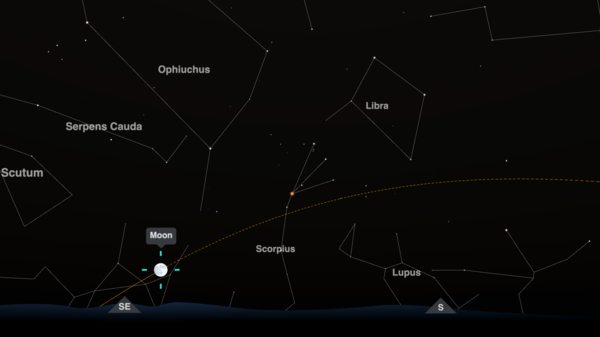
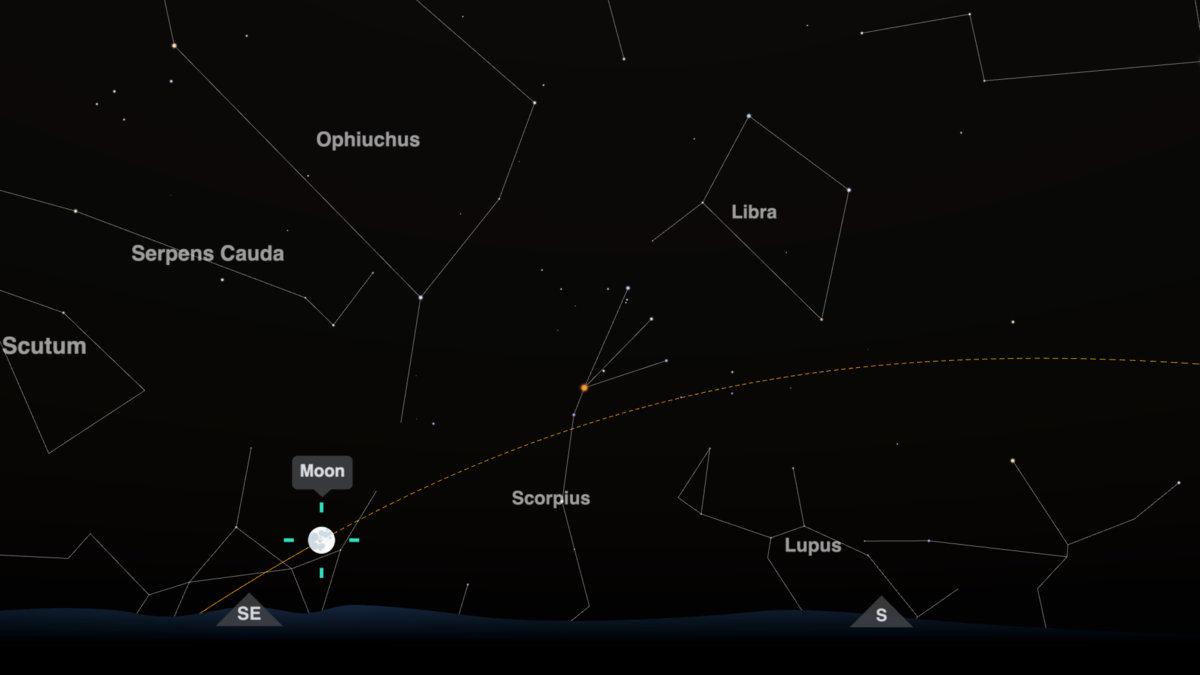
June 21, 2024: the Full Moon rises over New York in the southeast (click to zoom). We can see that the Full Moon follows a low path across the sky, keeping close to the horizon. Again, this is the opposite to the Sun’s path during the summer.
©timeanddate.com
Explore Things for Yourself!
Use our tools to look up the directions of moonrise, moonset, sunrise, and sunset for your town or city on any date.
Explore moonrise and moonset directions for your cityExplore sunrise and sunset directions for your city
You can also see the Moon and Sun rise and set on our Interactive Night Sky Map for your town or city.
Explore the night sky